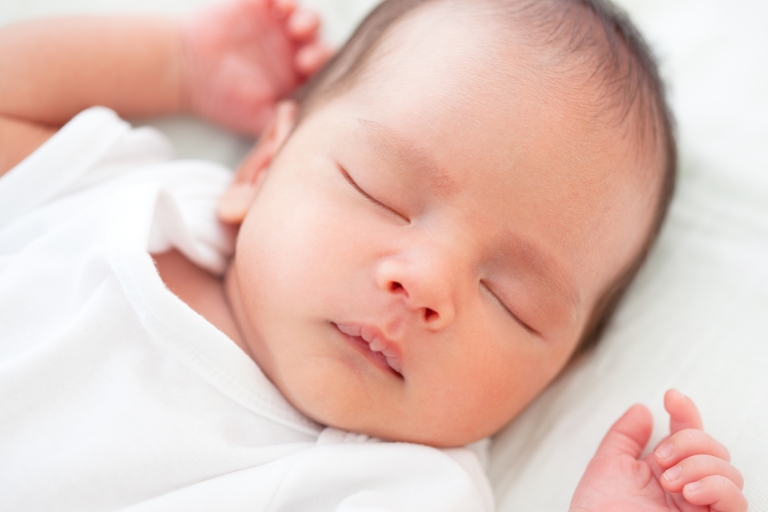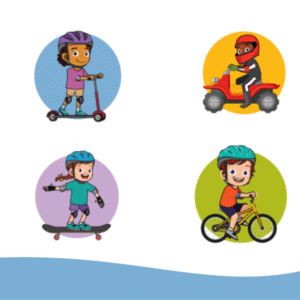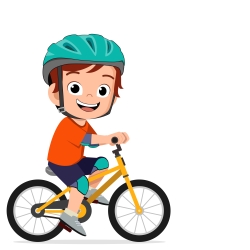tips for safe sleep

As parents and caregivers, we want nothing more than to give babies a safe environment, especially when it comes to sleep. Did you know that sudden unexpected infant death (SUID) related incidences, such as unexplained sudden death in infancy (formerly known as SIDS), accidental suffocation and strangulation in bed, and other unknown causes are significant concerns for infants (babies under the age of 1). In fact, each year in the United States, around 3,400 babies die suddenly and unexpectedly, many of which are because of babies not sleeping in a safe way. While research continues to be done for the cause of SUID, the best thing we can do for our babies is continue doing what we know works, which is providing them a safe environment to sleep.
At Dayton Children’s Hospital, we know that your baby’s safety while sleeping is a top priority, and we are here to help you learn about what a safe sleep environment is and how to keep your baby safe while sleeping. Safe sleep practices are important for your baby’s well-being. We know that you get a lot of information as parents, and it can be hard to keep up with. The ABCs of safe sleep are a simple reminder of how to put your baby to sleep safely.
- Alone: Babies should always be placed alone, on their backs, and in a crib. According to the American Academy of Pediatrics (AAP), babies should not bedshare, but room share with their parents, ideally for the first six months.
- Back: Putting your baby on their backs is the safest place. Why? When a baby is on their back, the air tube or trachea is above the esophagus (the tube that carries the food). If your baby spits up while on their back, the food and fluid will flow back into their stomach instead of towards their lungs. When a baby is placed on their stomach, the esophagus is positioned on top of the trachea, making it easier for any food that is regurgitated or refluxed to collect near the opening of the trachea. This increases the risk of choking for the baby.

- Crib: Babies should also sleep on a firm, flat, non-inclined surface, such as a crib, bassinet, or play-yard with only a tight-fitted sheet and free from any soft bedding, loose blankets, stuffed animals, toys, or bumper pads. These materials could increase your baby’s’ risk of suffocation.
Here are some more tips for safe sleep and to reduce your baby’s risk:
- Dressing your baby in a safe sack is a safe option instead of blankets. Blankets can cover your baby’s face, posing a risk. By dressing baby in a sleep sack, you can help prevent overheating.
- Sitting devices, especially for babies younger than four months, are not recommended for sleep in the hospital or at home. This includes car seats, strollers, swings, infant carriers, and infant slings.
- Babies and their parents should stay away from nicotine and smoke.
- There is no evidence to recommend swaddling to reduce risk of unexplained sudden death in infancy. If infants are swaddled, always place them on their back. Weighted swaddles, weighted clothing, or weighted objects on or near the baby are not safe and not recommended. · When a baby shows signs of trying to roll (which usually occurs at 3 to 4 months but may occur earlier), swaddling is no longer appropriate, as it could increase their risk of suffocation if a baby that is swaddled rolls onto their chest.
- Giving your baby human milk or breastfeeding can help reduce unexplained sudden death in infancy. The AAP recommends exclusive human milk feeding for up to six months. After that, you can continue breastfeeding for two years or longer, if both you and your baby want to.
- Supervised, awake tummy time is recommended to help with your baby’s development and to reduce your baby developing positional plagiocephaly (flat spot on their head).
In addition to these safe sleep practices, it is very important to have support people or a group to help you during this time. As you navigate these phases as a parent, please know that you are not alone and that you can reach out to Dayton Children’s for help along the way.
Additional resources
- Safe Sleep Ambassador Program (Dayton Children’s Hospital & Public Health – Dayton & Montgomery County) [https://www.phdmc.org/index.php?option=com_jevents&task=icalrepeat.detail&evid=2&Itemid=0&year=2023&month=01&day=26&title=safe-sleep-ambassador-training&uid=c973203916a60687c12de107390d7887] ‘Tis the season for travel, and no one can relate to that more than I can!
- Take the National Institute for Children’s Health Quality’s Safe Sleep Quiz.
- The AAP’s Safe Sleep Guidelines [https://www.aap.org/en/patient-care/safe-sleep/]
- Ohio Department of Health Infant Safe Sleep [https://odh.ohio.gov/know-our-programs/maternal-infant-wellness/safe-sleep]
care that goes above and beyond
Because every child deserves care that goes above and beyond, Dayton Children’s provides compassionate, expert care for kids of all ages. Find a provider, schedule an appointment, or learn more about conditions we treat today.




